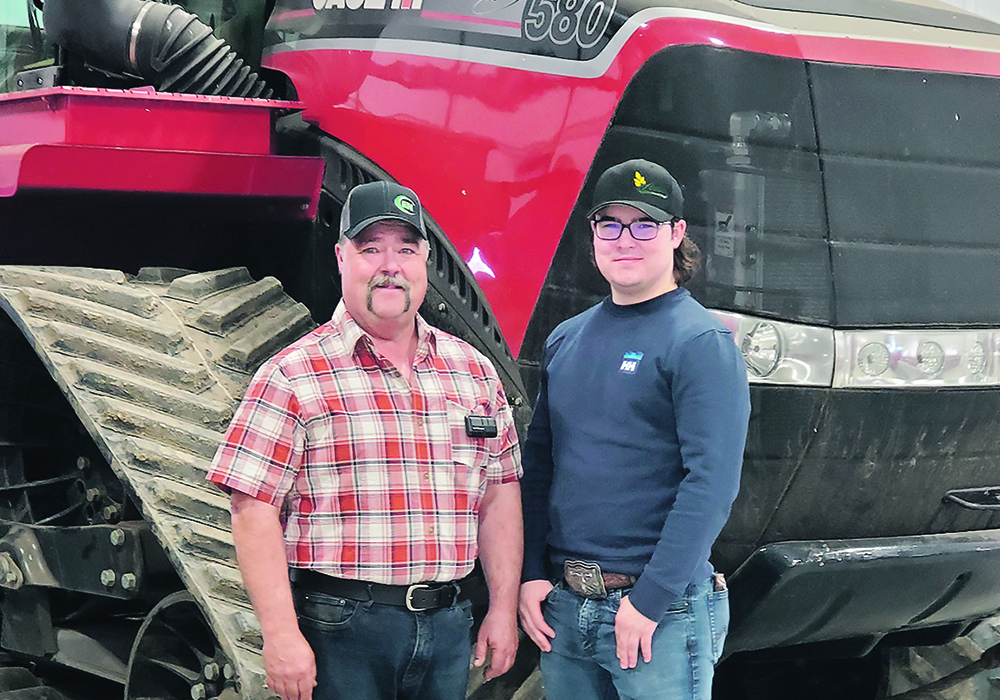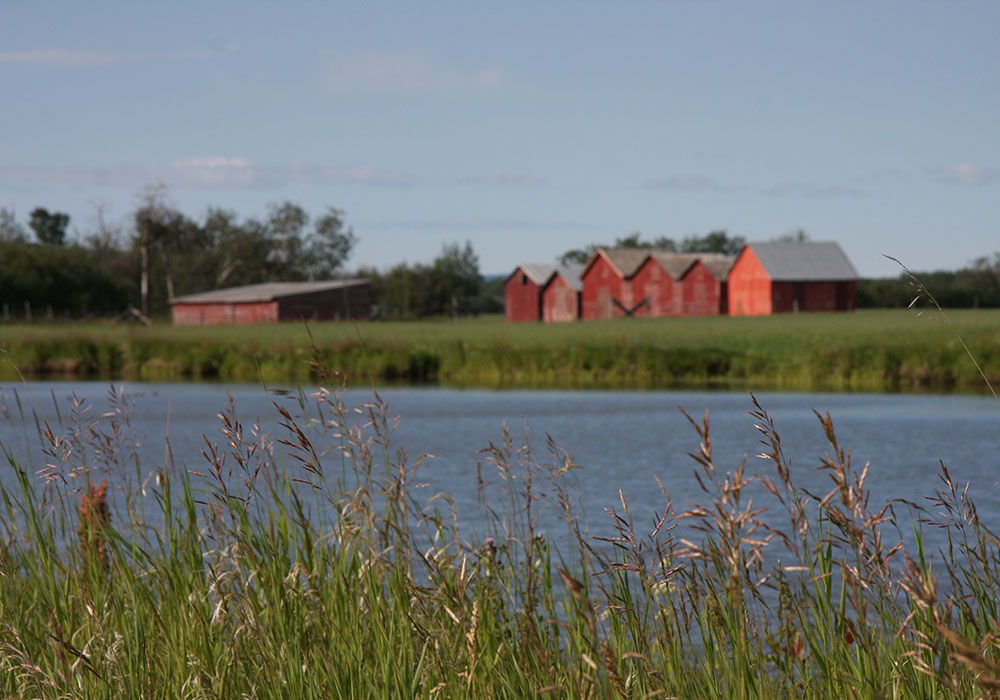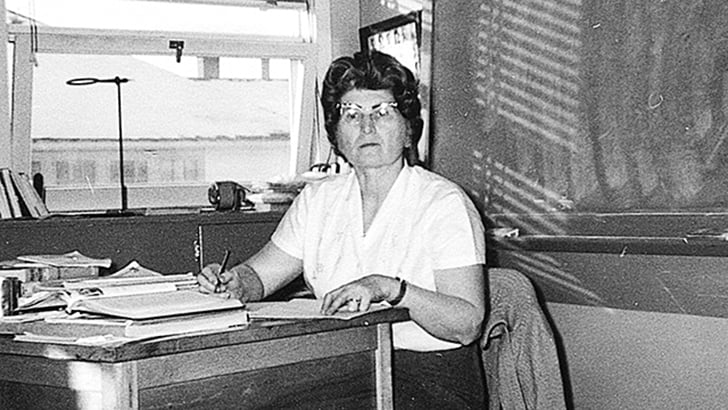VALLEYVIEW, Alta. — The late 1970s and early 1980s were pivotal years for Roland and Fay Cailliau. They moved from Alberta’s south to north and from crops to cattle.
It has worked out well.
“I love what I’m doing,” says Roland, the current vice-chair of Alberta Beef Producers. “I enjoy cows. I enjoy cattle. Always have.”
Roland grew up on a farm near Enchant, Alta., and has no fondness for the demands of moving irrigation pipe and tending crops, which he remembers well.
Fay grew up on a farm near Ed-monton so agriculture has always been their individual and shared culture.
“Here we have life easy compared to what we had down there,” says Roland.
“I got into cattle because it fit well with the land here. Our land here, it’s poor soil. Poor drainage, poor soil. Clayish. Grows hay, grows feed like you wouldn’t believe.”
The Cailliaus have about 125 cows on 12 deeded quarters of land north of Valleyview.
 Roland and Fay Cailliau raise cattle on 12 quarters north of Valleyview, Alta. | Barb Glen photo
Roland and Fay Cailliau raise cattle on 12 quarters north of Valleyview, Alta. | Barb Glen photo
The cattle are primarily Sim-mental with Red Angus influence, and the land is managed in a 10-year rotation of two years in grain, four years in hay and four years in pasture.
This year, for the first time in the last 30, he planted a few acres of canola but weather conditions hadn’t favoured the crop as of late June.
“We can make it work a lot better with cattle economically than we can with grain,” said Roland.
“We tried grain in the ’80s and we started switching over to cattle and we’ve just maintained that. The only reason we grow any grain now is for rotational purposes. That’s it.
“We just feel we’ve got to work up that soil once in awhile. The clovers, the alfalfas tend to die out and the quack grass takes over. Quack grass is fine feed, there’s nothing wrong with it, but we find that it just works better if we rotate a little bit.”
Roland said he’s been lucky in the cattle business in several respects. He sold most of his herd in a drought year and considered re-building a few years later. He and Fay decided against it, and another drought came the following year and they were relatively unscathed.
He was operating a livestock trucking business in 2003, the year BSE disrupted the industry.
“When ’03 hit, we had a small herd, about 25 cows. So it didn’t affect us like it affected so many others,” he said. ”I was lucky.”
The trucking business was sold in 2009 and the family concentrated on cattle ranching.
“I haven’t regretted it. I enjoyed the work. We had a good business, and travelled from north of Fort St. John all the way to Lethbridge and every point in between, and over to Saskatchewan the odd time.
“It was fun. I enjoyed myself. Made decent money. What else can you want out of life?”
Fay and Roland have four grown children, none of whom are involved in the ranching operation, and there are now six grandchildren. Roland notes that the kids grew up in the late 1980s and early 1990s, when agricultural profits were low to non-existent.
“If there’d been really good money, they might have stayed. Not saying they would have, but they might have,” said Roland.
As a cattle producer and the next chair of ABP, he wants to see the cattle business become consistently profitable.
“We talk about succession all the time…. I keep saying, you show sustainable profitability, so it’s year after year, people will come back or stay on the farm. You do what we did in the ’80s and ’90s, and everybody leaves. That’s why we lost a generation or two of farmers.”
Their own succession plan consists of giving each child three quarters of land and letting them decide what to do with it.
Roland initially got involved in ABP over objections to a proposed government policy embraced by a former agriculture minister.
“In blunt language, I was pissed off at George Groeneveld. That’s why I joined ABP.”
He felt the Alberta Livestock and Meat Strategy was being forced on cattle producers using a stick rather than a carrot type of approach.
“The irony of it is, they were proposing what the industry has gone to,” said Roland, referring to traceability and record keeping.
However, he said the carrot of sustainability and the ability to meet consumer desires have proven more effective than the previous approach.
Fay is the operation’s bookkeeper, credit adviser and rotational grazing advocate. She works on the ranch but claims she has no talent for helping at calving time.
“I’m just really no good at it,” she said. “I’ve had lists made up for me. I’ve had people explain what to look for and it’s always a surprise.”
She and Roland enjoy the story of why he no longer brings her flowers.
“He came home with flowers one day two decades ago and has never forgiven me for this statement. I looked at the flowers, I looked at him and said ‘you bought the tractor.’ ”
As it turned out, he hadn’t bought a tractor, only the bouquet.
“He used to buy them rather regularly. I’m so sad. Maybe one day,” said Fay with a smile.
She also admits to one day writing her resignation. Roland, who was trucking at the time, shared the news with other ranching wives, expecting them to be aghast.
“Each one of them said, ‘I wish I’d thought of that,’ ” recounts Fay.
“She wrote the letter of resignation, but I didn’t accept it,” said Roland.
As he looks toward next year as ABP chair, he has some specific goals.
“Continue on a steady course towards increasing the profitability of the industry. At the end of the day, I think that’s what it’s all about. We have to do things that end up leaving more money in producers’ pockets.”
He also wants to foster more co-operation between the cattle industry’s various sectors, among them the Alberta Cattle Feeders Association and the Western Stock Growers Association, the packers, retailers and consumers.
“We realize that we need to work together on as many things as we possibly can. I think it will come. I think we’ll be there within the next couple years. We’ll have it figured out. Then we can really do some amazing things.”


















